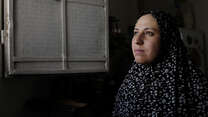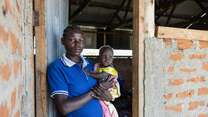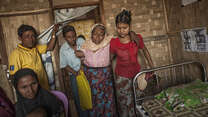In 2018, the International Rescue Committee assisted over 120,000 Syrian refugees and low-income Jordanians to access healthcare, protection, education and income generation opportunities. One of the recent changes that IRC staff have noticed is that Syrian women are taking on more of an income earning role than was the norm back in Syria and that this is creating changes in household dynamics.
To assess changing gender norms and understand how this affected programming, IRC commissioned consultancy firm Gender Insights to lead a research study in partnership with IRC ́s field team in Jordan.
Key findings:
- Almost a third of Syrian refugees live in Female Headed Households and Syrian women are now more likely to be in paid employment (30 percent) compared to before the crisis (19 percent).iii While Syrian women’s role in earning and income has increased, men’s role as the main income earner has now reduced considerably.
- Syrian women felt they were more time poor than ever before. Being overworked meant they had no time, or space for themselves and this negatively affected their emotional health and well-being.
- Bringing money into the home brought women newfound power, respect and influence. Additionally, having a woman working in a respected job could raise the status of the entire household.
- The old paradigm of women staying at home and men working is not viable for the current economic situation. Although common practice had changed and women now increasingly work, Syrian men felt a huge amount of disappointment and anxiety from not being able to support their families financially.
- Because community acceptance mattered deeply to people, and because of a lack of positive role models’ people were reluctant to exhibit a change in social norms, even if this change was already taking place.
- Discriminatory social norms continue to be the root cause of GBV and women noted that continuing to only treat survivors of violence will act as just a band-aid on a wound without addressing the real issue. While at a systemic level, primary health facilities were not being used as a place to make GBV referrals.


